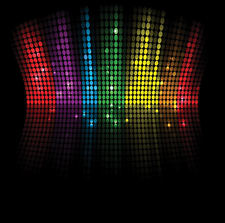Carla plugin host: New sound generator for Linux
A Wonderful Noise

© Lead Image © vska, 123RF.com
Thanks to the Carla plugin host, you can now integrate plugins in any format into any audio application. Carla also comes with a universal toolkit for modular sound generators.
Linux has several sophisticated applications that give musicians excellent options for recording, editing, and mixing sounds. Numerous autonomous synthesizers and effect devices also are available for generating the corresponding sounds. However for this purpose, many musicians prefer to use software that they can integrate directly into their production environment as a plugin.
One problem that musicians contend with is the five very different formats that plugins for Linux use. Many applications only support two or three of them, and Murphy's Law states that your favorite module is not going to work with your favorite application, because the formats don't match.
Portuguese developer Filipe Coelho (a.k.a. falkTX) has been working on eliminating this issue. His plugin host, called Carla, supports virtually any plugin capable of running on Linux and can be used itself as a plugin in two popular formats, LV2 and VST. A host software of this kind can load plugin modules, display their graphical interfaces, and integrate their processing capabilities into the host environment's data stream.
[...]
Buy this article as PDF
(incl. VAT)
Buy Linux Magazine
Subscribe to our Linux Newsletters
Find Linux and Open Source Jobs
Subscribe to our ADMIN Newsletters
Support Our Work
Linux Magazine content is made possible with support from readers like you. Please consider contributing when you’ve found an article to be beneficial.

News
-
Debian Unleashes Debian Libre Live
Debian Libre Live keeps your machine free of proprietary software.
-
Valve Announces Pending Release of Steam Machine
Shout it to the heavens: Steam Machine, powered by Linux, is set to arrive in 2026.
-
Happy Birthday, ADMIN Magazine!
ADMIN is celebrating its 15th anniversary with issue #90.
-
Another Linux Malware Discovered
Russian hackers use Hyper-V to hide malware within Linux virtual machines.
-
TUXEDO Computers Announces a New InfinityBook
TUXEDO Computers is at it again with a new InfinityBook that will meet your professional and gaming needs.
-
SUSE Dives into the Agentic AI Pool
SUSE becomes the first open source company to adopt agentic AI with SUSE Enterprise Linux 16.
-
Linux Now Runs Most Windows Games
The latest data shows that nearly 90 percent of Windows games can be played on Linux.
-
Fedora 43 Has Finally Landed
The Fedora Linux developers have announced their latest release, Fedora 43.
-
KDE Unleashes Plasma 6.5
The Plasma 6.5 desktop environment is now available with new features, improvements, and the usual bug fixes.
-
Xubuntu Site Possibly Hacked
It appears that the Xubuntu site was hacked and briefly served up a malicious ZIP file from its download page.

